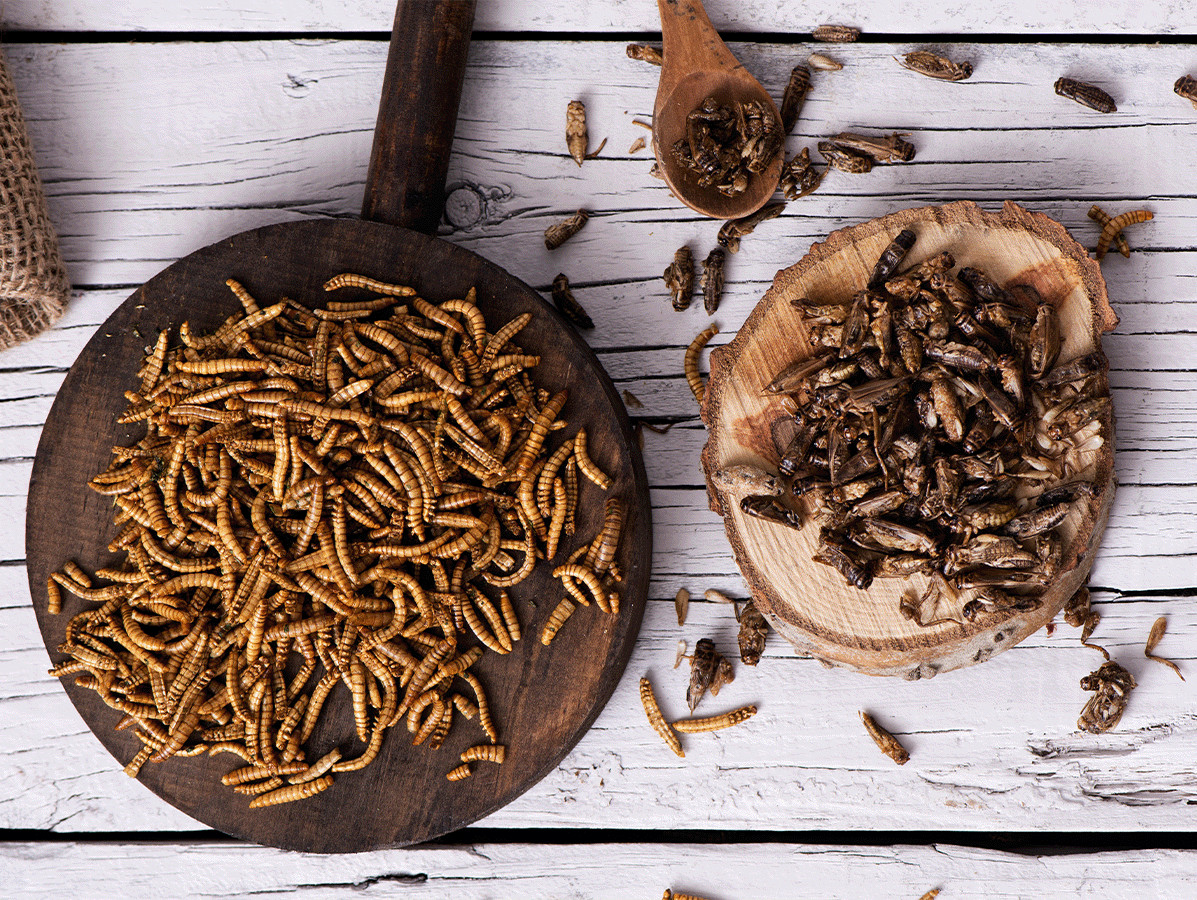
Insects are a good alternative to high-quality proteins. In the European SUSINCHAIN (Sustainable Insect Chain) project WUR researcher Teun Veldkamp explores the options for incorporating insects in animal feed and food designed for humans.
Because insects reproduce fast, they offer real opportunities as an alternative source of protein in animal feed. Veldkamp: “Another big advantage of insects is that you can grow them on waste streams from the food processing industry, such as vegetable remains and pulp, making them much more sustainable than fishmeal and soya.” Moreover, insects can be cultivated locally.
The food industry is interested in alternative sources of protein; the nutritional value of insects is comparable to that of ordinary meat. However, consumers are not at all keen on eating whole insects. But a good alternative might be to incorporate insect flour in food products such as bread and pasta.
One disadvantage of insect farming is the cost. Insects have been farmed for decades but not on a large scale. If insects are to become a realistic alternative source of protein, production needs to be scaled up. The aim of SUSINCHAIN is therefore to test and demonstrate innovative rearing methods that will allow a smoothly functioning, commercially viable European insect supply chain to be set up.
When developing business models and examining possible markets, the researchers look at the current state of affairs and the options for insect producers. And they also look at the issues insect farmers encounter, in terms of both legislation and rearing methods.
The researchers are also examining various rearing techniques and ways of improving the transport of larvae and eggs. They look at the quantities of larvae per rearing box, the quantities of feed and the types of feed. Temperature and humidity are important when transporting eggs for the production of larvae, for example.
The project also focuses on developing the technology for processing insects. The scientists tested techniques including microwaving, radio-frequency drying and low-energy electron beams on a variety of larvae. Those experiments yielded various products, some of which are being tested further in another work package looking at the use of insects in animal feed.
For the use and application of insects in food for humans, six product prototypes are being developed that will then be tried out on consumers and sensory panels. The insect meal will be incorporated in standard products such as pasta, bread and falafels. Consumer tests are being held in Denmark and Portugal.
Source: Wageningen University & Research